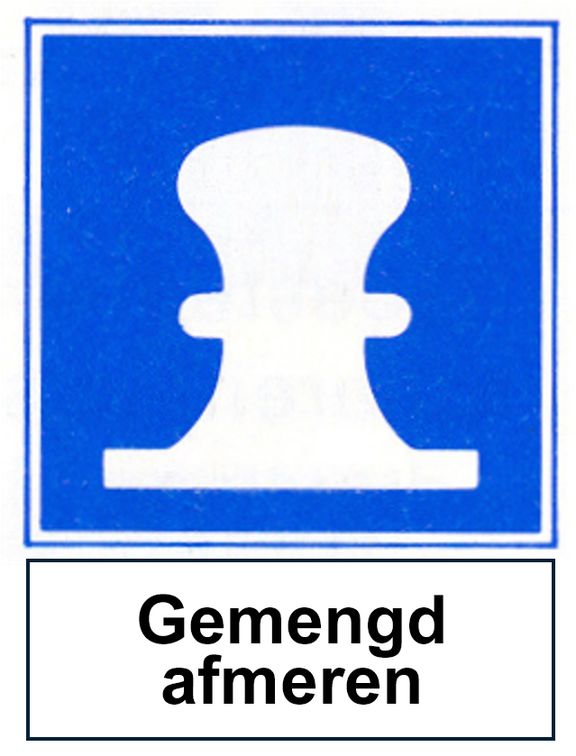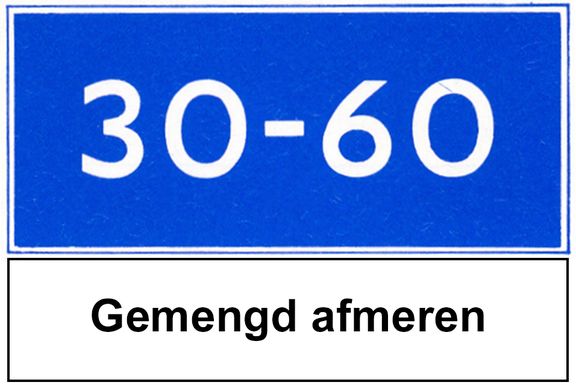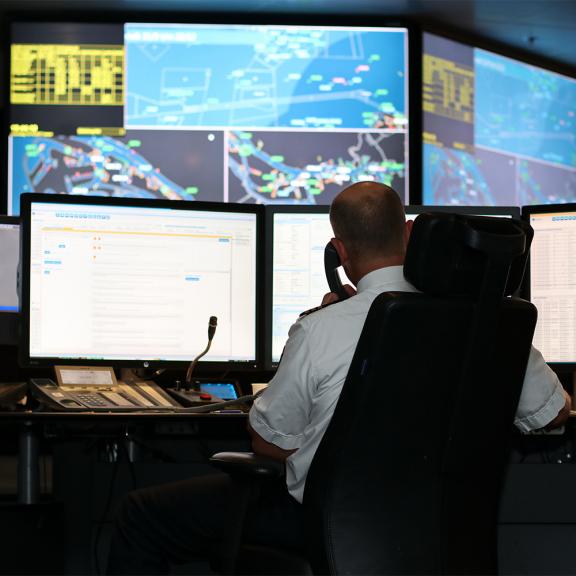
Mixed berthing
Inland vessels with and without hazardous cargo are allowed to mixed berthing at around 50 berths in the Rotterdam port area. These have been determined in consultation with the inland shipping industry and the Safety Region. The so-called 1-cone and 2-cone ships can then berth directly next to each other and next to ships without hazardous cargo.
This fits in with our policy of using the existing space in the port as efficiently as possible and creating more berths for inland shipping. Mixed berthing is only permitted at the berths designated with signs and provided that all conditions for mixed berthing are met (E7 (bollard) sign with lower sign "Gemengd afmeren" or E.5.2 sign with lower sign "Gemengd afmeren").


Frequently asked questions
What is hybrid berthing?
Hybrid berthing is the direct or indirect berthing of inland waterway vessels in which the berthing distances referred to in Article 7.07(1) of the Inland Navigation Police Regulations are not respected. This definition can be found in Article 1(a) of the 2022 Rotterdam ‘hybrid berthing’ decree.
Is hybrid berthing permitted for all vessels?
No, not all vessels are suitable for hybrid berthing. Whether a vessel is suitable for hybrid berthing depends on the type of vessel, the type of cargo or the type of activity that takes place on board the vessel.
This can be seen in Article 1(e) of the Decree (type of vessel and cargo), Article 2 of the Decree (activities, duty to report) and Article 3 of the Decree (type of vessel in relation to the berth).
At which berths is hybrid berthing allowed?
There are about fifty berths in the Rotterdam port area where hybrid berthing is allowed. These are listed in Article 3 of the 2022 Rotterdam ‘hybrid berthing’ decree.
What signs are used to designate a berth for hybrid berthing?
This is done with the use of two signs:
1. E.7 met een onderbord F.4 met daarop de tekst ‘gemengd afmeren'
2. E.5.2 met een onderbord F.4 met daarop de tekst ‘gemengd afmeren'.
Because hybrid berthing is not immediately clear for all shippers – such as foreign shippers – a reference to the Port Authority’s website: www.portofrotterdam.com/GM has also been included on the lower signs. That web page includes all the relevant information about hybrid berthing.
Why do I need to register my vessel with dangerous goods in IVS Next if I want to use a hybrid berth?
Inland waterway vessels that use hybrid berths and that transport dangerous goods are required at all times to know which dangerous goods they are transporting. It is important when incidents occur for emergency services to be informed immediately whether, and if so which, dangerous goods are on board. That is because, in hybrid berths, it cannot be said with certainty whether an incident involves dangerous goods. Via IVS Next, shippers always state which cargo is on board when they depart from Rotterdam or call at Rotterdam. However, this is not done for movements within the port of Rotterdam. This is undesirable in the case of hybrid berthing. That is why inland waterway vessels that use hybrid berths and carry dangerous cargo must also report their cargo in IVS Next for movements inside the port.
Does this rule apply to all dangerous goods?
No, this requirement does not apply to bunker vessels transporting cargo with a flash point of 55 degrees centigrade or higher.
Is board-to-board transshipment allowed in hybrid berths?
No, that is not allowed. This follows from Article 2(i) of the 2022 Rotterdam ‘hybrid berthing’ decree.
May I ventilate my vessel in hybrid berths?
No, ventilation is not allowed as a rule in hybrid berths in the Rotterdam port area. There is an exception to this prohibition when the Harbour Master of Rotterdam has designated a berth for this purpose. Ventilation is allowed at two hybrid berths: jetty 3 in the Geulhaven and at bollards B1 and B2 in the Yangtze Canal.
What is meant by ‘preferences’ in Article 4 of the Hybrid Berthing Decree?
Preferences are recommendations for the shipper designed to keep hybrid berthing smooth and trouble-free. These are recommendations that require shippers to assume their responsibilities. Some of the recommendations are not always feasible in practice. They are therefore not strict requirements/obligations for hybrid berthing.
What should I pay attention to in the case of hybrid berthing?
1. First of all, make sure that your vessel is suitable for hybrid berthing. In other words, your vessel must be covered by the definition suitable for hybrid berthing. See Article 1e of the Decree.
2. Then you should check whether the hybrid berth is for tankers only, or precisely not for tankers, or for all vessels that are suitable for hybrid berthing. See Article 3 of the Decree.
3. Furthermore, you should take care to submit certain reports, refrain from certain activities and/or regulate certain matters For this, see Article 2 of the Decree and in case of ventilation on jetty 3 in the Geulhaven or dolphines B1 or B2 in the Yangtze Canal Article 3 paragraph 5 of the Decree on a mixed mooring berth
4. Finally, you are asked to observe a number of recommendations. See Article 4 of the decree.
All points can also be read in the Decision Summary.
My question is not on the list. What should I do now?
If you have a question that is not listed here, email it to the Harbour Coordination Centre (HCC) or call the HCC on +31 (0)10-252 1000.
More information? Contact:
